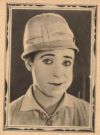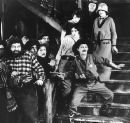











There is some dispute over who invented the moving pictures. The French claimed that they created moving pictures. The Americans had similar claims. No matter who invented the medium, it had a major impact. Movie houses or Nickel Odeons sprouted all over the world and suddenly it became a big industry. Originally, the actors who played in the theaters shunned the movies. It was below their dignity to appear in movies. In addition, the movie studios would not identify their actors by name for fear of making them well known and having to pay them more money. Eventually by 1910, movies were established as a mainstream art form and new stars came into being. The early movie stars were mainly comedians. Their names and how they shaped the art form still shines to this day. They were the likes of Harry Langdon, Harold Lloyd, Ben Turpin, and Charlie Chaplin. Each different, in their own way and each extremely talented. Unlike the comedians today that rely on four letter words and sex and drug related jokes to make the audiences chuckle, they only had their facial expressions and their body language to make the audiences laugh. Also, consider the fact that the body language had to be subtle. One could not make rude gestures with his fingers or other body parts to get a laugh. The Silent Era was not only about comedy. There were great drama directors and producers who made their marks. Movie critics and students still talk about D.W Griffith and his famous silent movies, Intolerance (1915) and Birth of a Nation (1916) or Cecil B. De Mille and his silent movies such as the original Ten Commandments (1923) and the King of Kings (1923.) |
||||||||||
One can imagine the awe of our ancestors across the world when seeing these magnificent movies with a cast of thousands. The 1925 blockbuster Ben-Hur reputedly had a cast of over 100,000. It had several directors and producers. Among the producers were Florenz Ziegfeld of the Ziegfeld Follies fame and Irving Thalberg, the genius of Metro Goldwyn Mayer. The chariot race still astounds me whenever I see it on the television. Finally, another innovation in this era that went on all the way to the fifties was the Serial. Serials were movies that lasted about 2 to 3 hours. They were divided into 13 to 18 chapters and were shown one chapter a week along with a feature film. Each chapter ended with a cliffhanger designed to bring the patrons back to the theatre the following week. The beginning of each chapter started with the last few minutes of the last chapter. In addition, there was an economy chapter near the end, which was a recap of the previous chapters. From early on the filmmakers learned how to make money with the least amount of work. Some famous stars such as John Wayne, Rod Cameron and Buster Crabb made their start in serials during the sound era. |